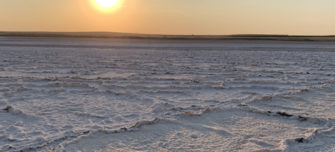Microbes at the extremes

What are extremophiles?
Extremophiles are organisms that display optimal growth in environmental conditions which are considered extreme. They can survive under harsh environmental conditions such as high and low pressures in deep-sea and high-altitude zones, extremely high and low temperatures (above 45°C or below 15°C), high-salt and acidic conditions, and infrared and thermal radiation, including ionising (gamma) and non-ionising (UV) radiation.
Many archaea have also been found living in extreme environments: for example, at high pressures, salt concentrations or temperatures. Their cell walls differ in structure from those of bacteria and are thought to be more stable in extreme conditions, helping to explain why some archaea can live in many of the most hostile environments on Earth.
Why does understanding the role of extremophiles matter to microbiology?
Over the years, scientists have been able to prove that microbial life has great flexibility when it comes to surviving extreme environments. From Martian habitats, to the deep dark ocean, salt lakes, coastal salterns and ancient salt crystals – microbial life exists.
Extremophiles have developed a variety of ingenious strategies for survival in extreme conditions. Some of these organisms have been around for at least three-and-a-half billion years, perhaps even longer. For example, 70% of our planet is ocean, at the bottom of which is the sea floor, where there are rocks covered in sediments, which is sometimes known as the ‘soil of the ocean’. Within those sediments and within those rocks is, almost exclusively, microbial life that we know very little about. Understanding the role of extremophiles can lead us to determining the impact these microbes have on our environment, climate change, soil fungi and other ecosystems, as well as their potential uses in biotechnology and medicine.
Read more about the world of extremophiles through a series of interviews with our members and the wider microbiology community, access our additional resources, including searching for antibiotics in the abyss, and continue to read more about microbes and where to find them as we explore the role of microbes in climate change and recycling.
-
Microbiologists working in this area
To celebrate our 75th anniversary in 2020, we invited microbiologists to nominate the discovery or event that best showcases why microbiology matters and helps us demonstrate the impact of microbiologists past, present and future. Learn more about the microbiologists who are working to understand the role of microbes in extreme environments.
-
Resources and further reading
Discover more about the importance of marine snow, the heroic exertion of radiation-resistant extremophiles and their potential uses in biotechnology and medicine, and microbes in the deep dark ocean.
-
The role of microbes in climate change and recycling
Microbes play key roles in nutrient cycling, biodegradation/biodeterioration, climate change, food spoilage, the cause and control of disease, and biotechnology. We will explore why microbes play an important role in climate change, and how thanks to their versatility, microbes can be put to work in many ways.
Image credits:
Antarctica_Katherine DuncanAndre Antunes
Amy Apprill





